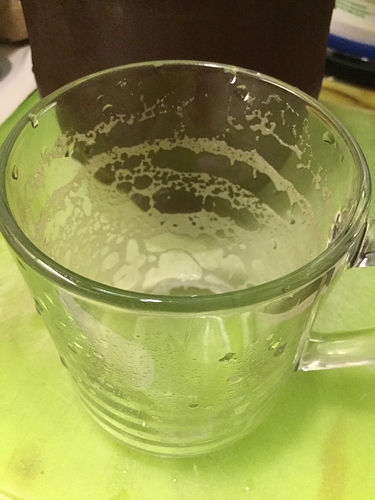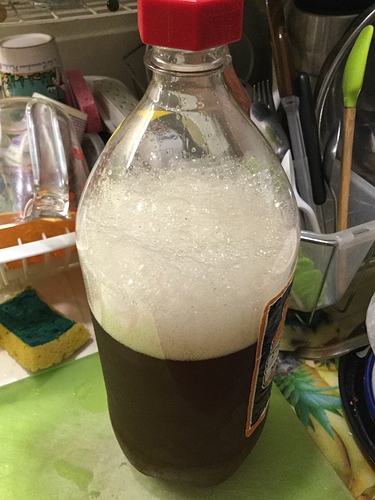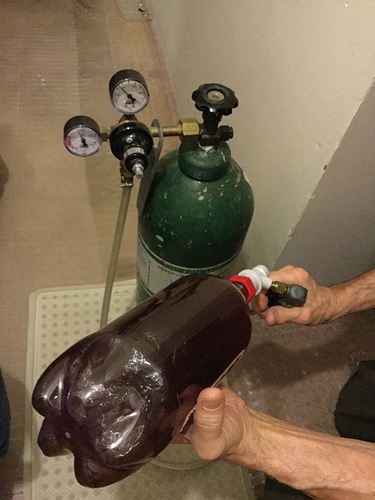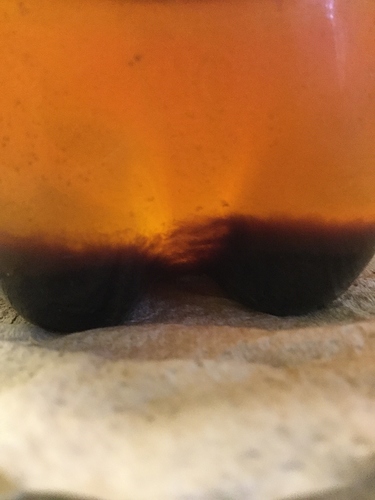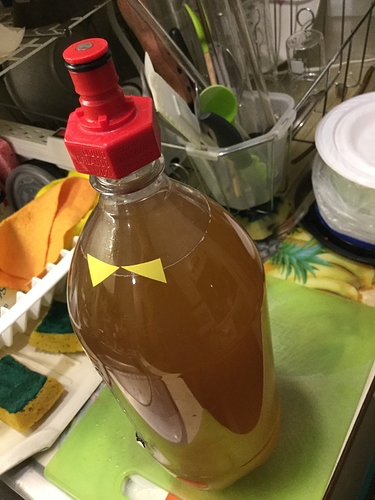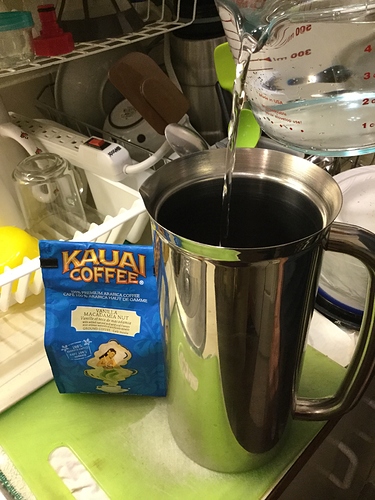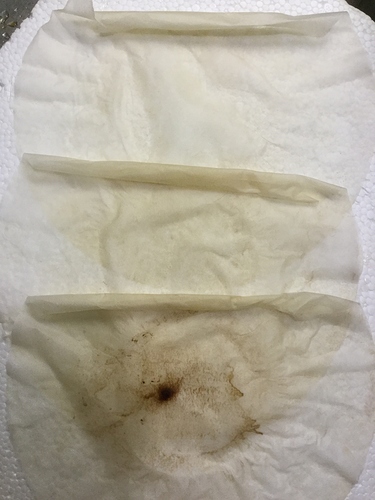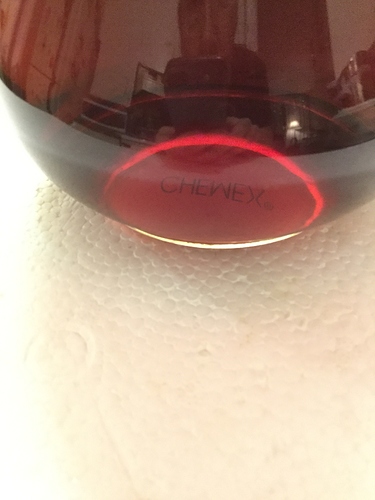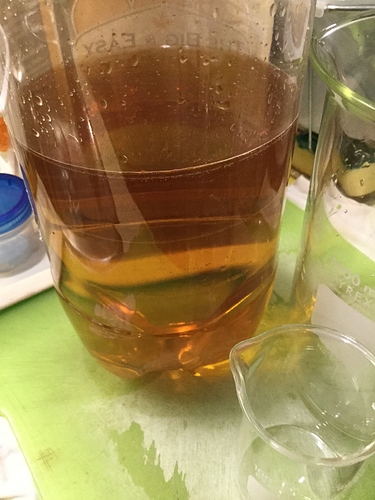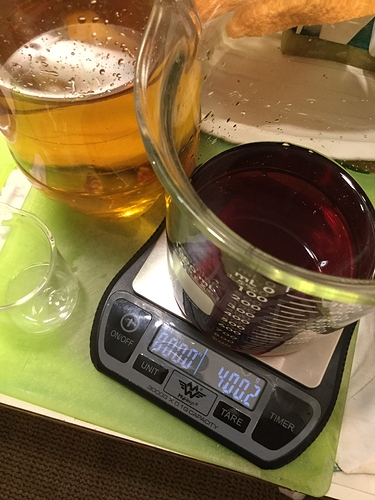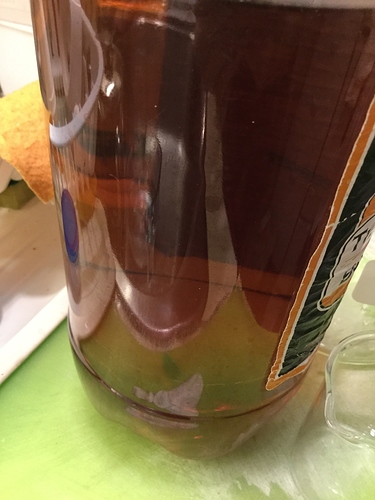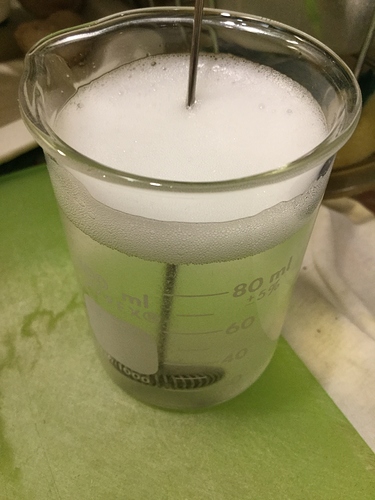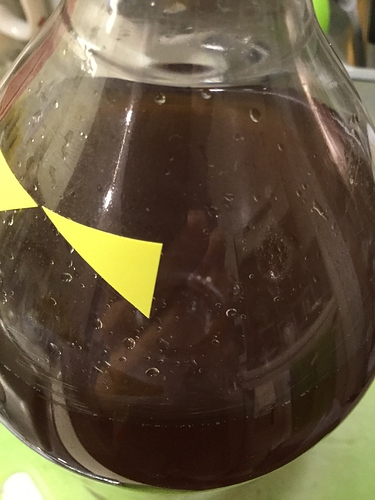Experiment #4 [Dec 5, 2019, 11:30 am]
Two taste tests
First, poured very carefully to avoid any sediment. The second agitated to include some sediment.
First, sediment-free pour: perfectly clear, nice flavour, but very weak carbonation, a ‘ginger-ale’ head that did not last very long (less than a minute).
Second, some sediment: cloudy, flavour slightly more bitter and again very weak carbonation, the ‘ginger-ale’ head/retention again.
Although the taste is acceptable, better without the sediment, I think what happened is that the gelatin coagulated out, taking some of the coffee out of solution with it. The only reason I can think of for this to happen is the coffee-making procedure. Instead of brewing a liter of coffee and using 500 ml, I brewed 450 ml and used 400 ml of it. I suspect I got something out of the more concentrated coffee that I left behind in the less concentrated coffee the first time around.
Conclusion
First, need to brew a full liter of coffee and use only half (400 ml). And, maybe run it through 3 paper filters to make sure as little solids as possible get through. Second, instead of adding vanilla/orange to the coffee use a flavoured coffee. My entire reason for making a smaller total amount of coffee in this experiment was to reduce the amount expensive vanilla extract needed. If I go with a flavoured coffee, I eliminate the need to add any vanilla and/or orange extract. For my first experiment with flavoured coffee I'm going to use
this one. I've made coffee with this before and like it's flavour. It has hints of vanilla and the macadamia is just enough to add a bit of earthy flavour.

